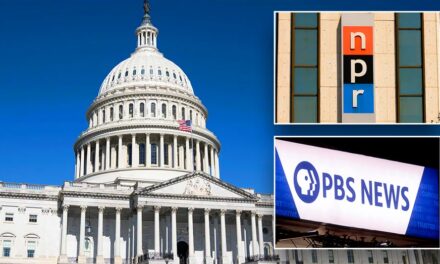Bill Nye, the renowned science educator and climate advocate, has weighed in on the devastating floods that recently impacted Texas, linking the tragedy to a broader pattern of ignoring the climate crisis. As communities grapple with the aftermath of torrential rains and widespread destruction, Nye is urging both policymakers and the public to confront the reality of climate change and its dire consequences.
The floodwaters that swept through Texas following record rainfall resulted in significant loss of life, extensive damage to homes and infrastructure, and displacement of countless families. Many regions saw water levels rise to unprecedented heights, forcing emergency evacuations and straining local resources. Nye claims that such climate-induced disasters are not merely unfortunate events, but are increasingly becoming the norm as climate change accelerates.
In a recent statement, Nye noted, “The effects of climate change are now more visible than ever. The rising temperatures and shifting weather patterns we are experiencing contribute to more frequent and severe weather events, including floods. What we are witnessing in Texas is not an isolated incident; it’s a wake-up call.”
Many scientists agree with Nye’s assessment, indicating that the warmer atmosphere holds more moisture, which can result in more intense storms. This means that areas already prone to flooding are facing even greater risk as climate change continues to intensify. The scientific consensus on this matter suggests that the frequency and severity of natural disasters are directly correlated with the consequences of climate change, a point that is often overlooked by those who continue to deny its existence.
In Texas, the effects of climate change can be observed in increasing temperatures, changes in rainfall patterns, and the increasing occurrence of droughts followed by heavy rains. These fluctuations pose severe risks not only to natural ecosystems but also to human safety and economic stability. The loss of life during these flood events compounds the tragedy as families suffer the profound emotional toll caused by such disasters.
Urban planning and infrastructure decisions have not always kept pace with the rapidly changing climate. Many cities in Texas lack adequate drainage systems and flood defenses robust enough to withstand the extreme weather that is becoming more common. Nye points out that the impact of poor planning is often disproportionately felt in underserved communities, where residents may lack the resources to relocate or rebuild after a disaster.
In his calls for action, Nye emphasizes that addressing climate change is not just a matter for environmentalists. It should be a concern for everyone—from business leaders and politicians to everyday citizens. “We need to educate ourselves and each other about climate science and advocate for sustainable practices that can mitigate the worst of climate change,” he stated. Nye highlights that investing in green energy, sustainable infrastructure, and resilient communities are imperative steps forward.
Moreover, Nye argues that political leaders in Texas and beyond must take the initiative to recognize and act upon the realities of climate change, rather than burying their heads in the sand. He expresses frustration over policymakers who continue to ignore the scientific evidence while millions are affected by climate-related disasters. In his view, political inaction leads to suffering, creating a cycle of devastation that can seem endless.
Public opinion on climate change is shifting, with an increasing number of Americans acknowledging its existence and severity. However, significant portions of the population still express skepticism about the science behind climate change. Nye stresses the importance of comprehensive education to dispel myths and misinformation that hinder progress in tackling the climate crisis.
As recovery efforts in Texas continue, Nye urges community leaders to prioritize long-term resilience over short-term fixes. Rather than merely responding to the aftermath of disasters, stakeholders should implement strategies aimed at preventing future catastrophes. This could include re-evaluating urban development plans, restoring natural landscapes that can absorb stormwater, and investing in renewable energy sources that lessen the reliance on fossil fuels.
Nye concluded by stating that addressing climate change is not simply about mitigating risks; it is about safeguarding the future. “We owe it to ourselves and future generations to leave behind a world where such disasters are no longer the norm,” he said. “By working together—citizens, scientists, and policymakers—we can create a pathway to a safer, healthier, and more sustainable future.”
As Texas struggles to recover from the devastating floods, the words of Bill Nye serve as both a reminder and a call to action. The interconnections between climate change and extreme weather events have never been clearer, yet the necessary responses and shifts in policy remain imperative. Acknowledging the reality of climate change and preparing for its effects may very well be the only way forward for a state that is no stranger to the whims of natural disasters.
The ongoing conversations around climate change underscore the need for collective action across various sectors of society. From grassroots advocacy to legislative changes at the state and national levels, everyone plays a role in shaping the future trajectory of climate preparedness. As individuals assess their own roles in this larger narrative, the urgency to act grows ever more pressing. The floods in Texas may eventually recede, but the lessons learned should resonate far beyond the immediate disaster.
In conclusion, the ongoing flooding crisis in Texas illustrates not only the devastating impacts of climate change but also the crucial need for society to proactively address the imminent threats it poses. Bill Nye’s assertion of the necessity to confront these realities resonates with many concerned citizens who are eager to make a difference. The time for action is now, and it is within our collective power to drive the change needed to protect communities from future climate-related disasters.
































